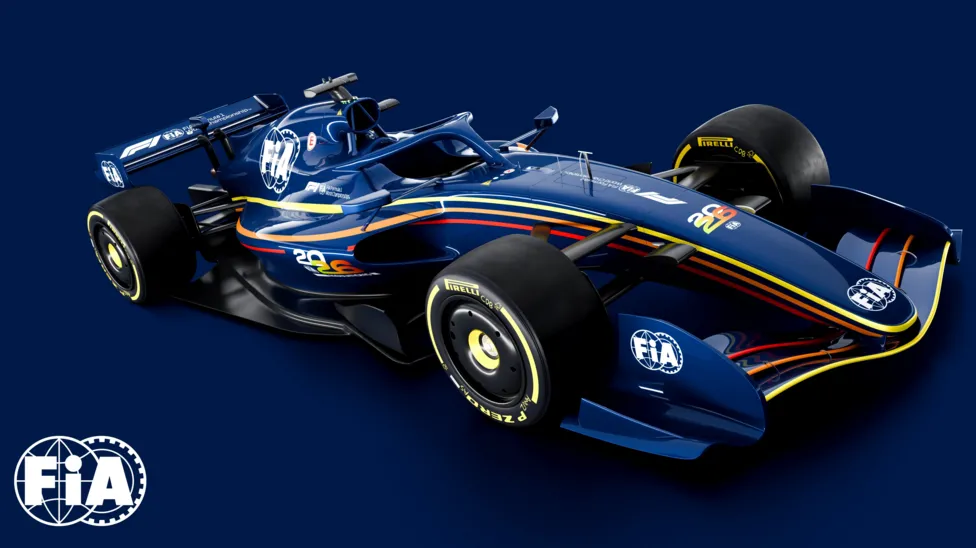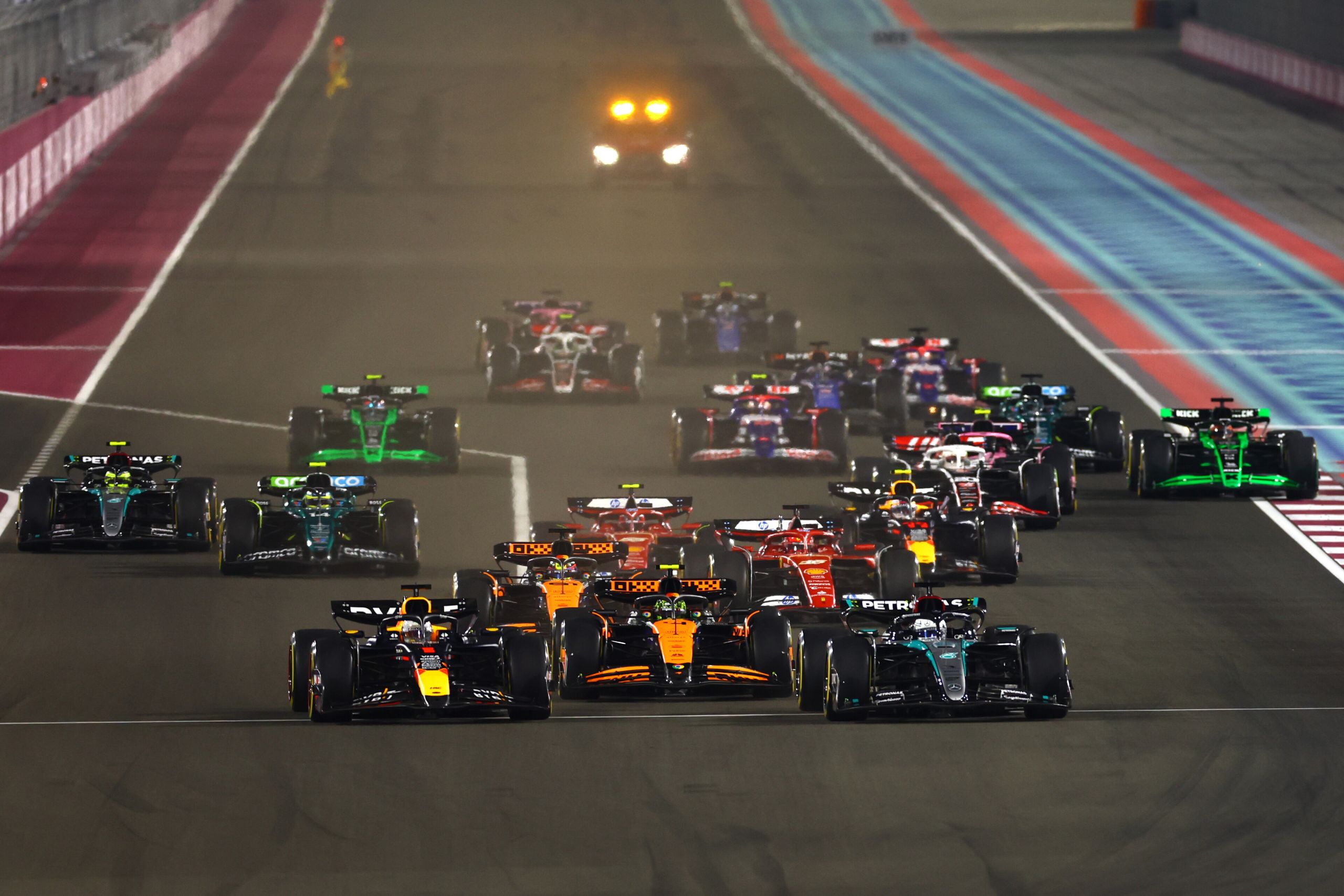New Regulations Set To Revolutionise Formula 1 For 2026


The FIA has unveiled groundbreaking regulations for the 2026 Formula 1 season, promising to enhance competition, safety, and sustainability in the sport.
Key Highlights:
- Nimble Car Concept: Central to the 2026 regulations, targeting improved raceability and closer racing.
- Weight Reduction: 2026 cars will be 30kg lighter, enhancing efficiency and handling.
- Redesigned Power Unit: Incorporates almost 300% more battery power and an even split between internal combustion and electric power.
- Active Aerodynamics: Adapted for the energy management needs of new power units.
- Increased Overtaking Opportunities: New Manual Override Mode for more electrical power deployment for the following car.
- Record Number of Manufacturers: Ferrari, Mercedes, Alpine, Honda, Audi, and Red Bull Ford Powertrains committed to F1 from 2026.
- Sustainable Fuel: Cars will run on 100% sustainable fuel.
- Enhanced Safety: Stronger structures and tougher tests for improved safety.
The Fédération Internationale de l’Automobile (FIA) has revealed a comprehensive set of technical regulations designed to enhance competition, safety, and sustainability in the FIA Formula One World Championship from 2026 onwards. Developed in consultation with the FIA Formula 1 Technical Working Groups and in collaboration with Formula 1, the sport’s ten teams, OEMs, and power unit manufacturers, these regulations were unveiled in Montréal ahead of the 2024 FIA Formula 1 Canadian Grand Prix. The World Motor Sport Council is expected to ratify the regulations on June 28.
FIA President’s Perspective
FIA President Mohamed Ben Sulayem stated: “Today, the FIA is defining a hugely exciting future for the pinnacle of motorsport with the launch of a comprehensive new set of regulations for the 2026 FIA Formula One World Championship and beyond.
“Following the publication of 2026 Power Unit Regulations two years ago, we have taken the opportunity to redefine the chassis regulations to match the energy requirements of the new power units. Collaborating with our partners at Formula 1 and with the assistance of the sport’s ten teams and all our stakeholders, this represents a unique revision that will ensure our premier championship is even more relevant to what is happening in the world.
“The Power Unit Regulations have already resulted in a record number of PU manufacturers committing to the sport. Now, with chassis regulations that provide for lighter, more agile cars featuring innovative aerodynamic solutions, we have created regulations designed to improve racing and make the championship more attractive to PU manufacturers, OEMs, and existing competitors. The key features of the 2026 F1 Regulations are advanced sustainability technology and safety. Our aim, together with Formula 1, was to produce a car that was right for the future of the sport’s elite category. We believe we have achieved that goal.”
Formula 1 CEO’s View
Formula 1 CEO Stefano Domenicali added: “These regulations mark a significant moment in the future of our sport as we look forward to a new generation of car and power unit that aims to give our fans closer and exciting racing. The new sustainably-fuelled hybrid power unit presents a huge opportunity for the global automotive industry, with the potential to be used by cars around the world and dramatically cut emissions. This potential is one of the key reasons why we will have a record number of engine suppliers in Formula 1 in 2026.
“We enter this new regulatory cycle with the sport in the strongest position it has ever been, and I am confident that the work done by the FIA to create these regulations will further strengthen the sport’s position globally.”
Technical Director’s Insights
FIA Single Seater Technical Director Nikolas Tombazis commented: “With this set of regulations, the FIA has sought to develop a new generation of cars that are fully in touch with the DNA of Formula 1 – cars that are light, supremely fast, and agile while remaining at the cutting edge of technology. To achieve this, we worked towards what we called a ‘nimble car’ concept. At the center of that vision is a redesigned power unit featuring a more even split between internal combustion and electrical power.
“On the chassis side, we have managed to reduce the size and weight of the car by 30kg, resulting in a more dynamic car. Additionally, we are introducing two exciting new features to enhance racing – active aerodynamics for very low drag on the straights and the Manual Override system that provides drivers with an on-demand burst of battery power when close enough to the car ahead.
“Lighter, more powerful, and more focused on driver skill, the 2026 FIA Formula 1 Technical Regulations are designed to provide closer racing among drivers, increase competition between teams, and improve the spectacle. Furthermore, we have opted for a higher electrical component of the power unit, a more efficient car overall, and fully sustainable fuels as part of our drive towards a more sustainable future for our sport.”
Key Innovations in the 2026 Regulations
Power Unit
- Enhanced Power Unit: Building on the most efficient hybrid engine currently used in F1, the 2026 power unit delivers even more power. The ICE power drops from 550-560kw to 400kw, while battery power increases from 120kw to 350kw – an almost 300% increase.
- Simplified Power Unit: By removing the MGU-H and expanding electrical power, the 2026 power unit is the most road-relevant yet seen in F1. Combined with 100% sustainable fuel, it offers a forward-thinking platform for future innovation.
- Energy Recuperation: The amount of energy that can be recuperated during braking is doubled, resulting in a total recuperable energy of 8.5 MJ per lap.
- Manual Override Mode: This mode allows for improved overtaking opportunities, with the following car benefiting from MGUK Override providing 350kW up to 337kph and +0.5MJ of extra energy.
- Manufacturer Commitment: Existing suppliers like Ferrari, Mercedes, and Alpine, the return of Honda, and the arrival of Audi and Red Bull Ford Powertrains have all committed to the new regulations.
Chassis
- Smaller and Lighter: The new car dimensions adhere to the ‘nimble car’ concept, with a wheelbase reduced to 3400mm, width to 1900mm, and floor width by 150mm. The minimum weight is set at 768kg, down 30kg from 2022 counterparts.
- Reduced Downforce and Drag: Downforce has been reduced by 30%, and drag by 55%.
- Wheel Size and Tyres: The 18-inch wheel size is retained, with the front tyre width reduced by 25mm and the rears by 30mm.
Aerodynamics
- Active Aerodynamics: Movable front and rear wings allow for greater cornering speeds with standard Z-Mode deployed. On straights, drivers can switch to X-Mode for a low-drag configuration.
- Aerodynamic Features: The 2026 cars will feature a three-element active rear wing, simplified end plates, a narrower front wing with an active flap, and in-washing wheel wake control boards.
Safety
- Enhanced Safety Measures: Revised front impact regulations introduce a two-stage structure to avoid incidents where the front impact structure (FIS) breaks off, leaving the car unprotected. Side intrusion protection is increased without adding weight. Roll hoop loads have been increased to 20G, with test loads up to 167kN.
- Improved Lighting: Rear wing endplate lights and lateral safety lights will be more visible to indicate the ERS status of a car stopped across the track. The GPS antenna will be repositioned for better sensitivity and future active safety developments.
Sustainability
- Sustainable Fuel: From 2026, Formula 1 power units will run on fully sustainable fuel, emphasizing environmentally responsible racing. This fuel can be used in almost any ICE-powered vehicle, offering a potentially game-changing solution to greenhouse gas emissions.
- Increased Electric Power: Greater use of electric power in the 2026 power units will shift towards a 50% electrical and 50% thermal power distribution.
- Net Zero Carbon Goal: The regulations align with the FIA’s objective of reaching Net Zero carbon by 2030.
The 2026 Formula 1 regulations signify a new era in racing, focusing on innovation, sustainability, and enhanced competition.





